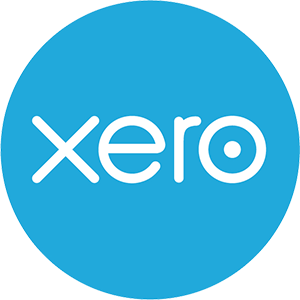Financial Ratios & Analysis
Financial Ratios are best explained using an example. Below are sample financial statements of a business achieving it's target ratios.
Profit & Loss - Sample Client Ratios
Sales 1 2,400,000 Double breakeven
Less COGS 2 1,440,000
Gross Profit 3 960,000 40% of Sales
Overheads 4 120,000 50% of Employment Costs
Marketing 5 120,000 5% of Sales
Employment Costs 6 240,000 25% of Gross Profit
Total Overheads 7 480,000
Net Profit8 480,000 20% of Sales
___________________________________________________________________________________
Balance Sheet - Sample Client
Inventory 9 250,000
Trade Debtors 10 300,000
Trade Creditors 11 (150,000)
Working Capital 12 400,000
Fixed Assets 13 350,000
Total Capital 14 750,000
Total Debt 15 300,000 40% Debt to Capital
Total Equity 16 450,000 67% Debt to Equity
Total Funding 17 750,000
| Gross Profit Margin | A measure of the proportion of revenue that is left after deducting all costs directly related to the sales. |
| Gross Profit 3 / Revenue 1 [$960,000 / $2,400,000 = 40%] | |
| Net Profit Margin | A measure of the proportion of revenue that is left after deducting all operating expenses. |
| Operating Profit 8 / Revenue 1 | |
| Return on Capital Employed | A measure of the efficiency and profitability of capital investment (ie. funds provided by shareholders & lenders). ROCE monitors the relationship between the capital ('inputs') used by the business and the earnings ('outputs') generated by the business. |
| Annualised EBIT 8 / Total Invested Capital 14 | |
| Debt to Capital | The debt-to-capital ratio is calculated by taking the company's debt, including both short- and long-term liabilities and dividing it by the total capital. Total capital is all debt plus shareholders' equity, which may include items such as common stock, preferred stock and minority interest. |
| Total Debt 15 / (Total Debt 15 + Total Equity 16 ) | |
| Working Capital Absorption | A measure of the adequacy of working capital to support sales activity. This measure indicates the investment made in working capital for each unit of revenue. |
| (Trade Debtors 10 + Inventory 9 + WIP - Trade Creditors 11 ) / Annualised Revenue 1 | |
| Return on Equity | A measure of how effectviely the business has used resources provided by its owners to generate profits. |
| (Annualised Net Income 8 / Opening Total Equity 16 ) | |
| Current Ratio | A measure of liquidity. This compares total currents assets against total current liabilities. |
| (Total Current Assets 9+10 / Total Current Liabilities 11 ) | |
| Quick Ratio | Measures the availability of assets which can quickly be converted into cash to cover current liabilities. |
| (Cash Equivalents + Trade Debtors 10 )/Total Current Liabilities 11 ) | |
| Activity Ratio | A measure of the efficiency in which the business manages its resources or assets. |
| Annualised Revenue 1 / Total Invested Capital 14 | |
| Accounts Payable Days | A measure of how long it takes for the business to pay it's creditors. |
| Trade Creditors 11 x Period Length / Total Costs of Sales 2 | |
| Accounts Receivable Days | A measure of how long it takes for the business to collect the amounts due from customers. |
| Trade Debtors 10 x Period Length / Revenue 1 | |
| Inventory Days | A measure of how efficiently the business converts inventory into sales. |
| Inventory 9 x Period Length / Total Cost of Sales 2 | |
| Cash Conversion Cycle | A measure of the length of time between purchase of raw materials and the collection of accounts from customers. |
| (Inventory Days + AR Days + WIP Days - AP Days) | |
| Debt to Equity | A measure of the proportion of funds that have either been invested by the owners (equity) or borrowed (debt) and used by the business to finance its assets. |
| Total Debt 15 / Total Equity 16 | |
| Labour Productivity | A measure of staff performance & efficiency against business output. |
| Gross Profit 3 / Employment Costs (Wages + Super + Payroll Tax + Workcover) 6 | |
| Economic Profit | A measure of profit against cost of capital; where a positive economic profit represents the creation of value for shareholders. |
| Net Operating Profit After Tax - (Weighted Average Cost of Capital x Total Invested Capital 14 ) | |
| Break Even Point | A measure to determine the amount of revenue or units that must be sold to cover fixed and variable costs associated with making those sales. |
| In Units : Fixed Costs / Contribution Margin per Unit |
|
| In Dollars: Sales Price per Unit x Break Even Point in Units | |




